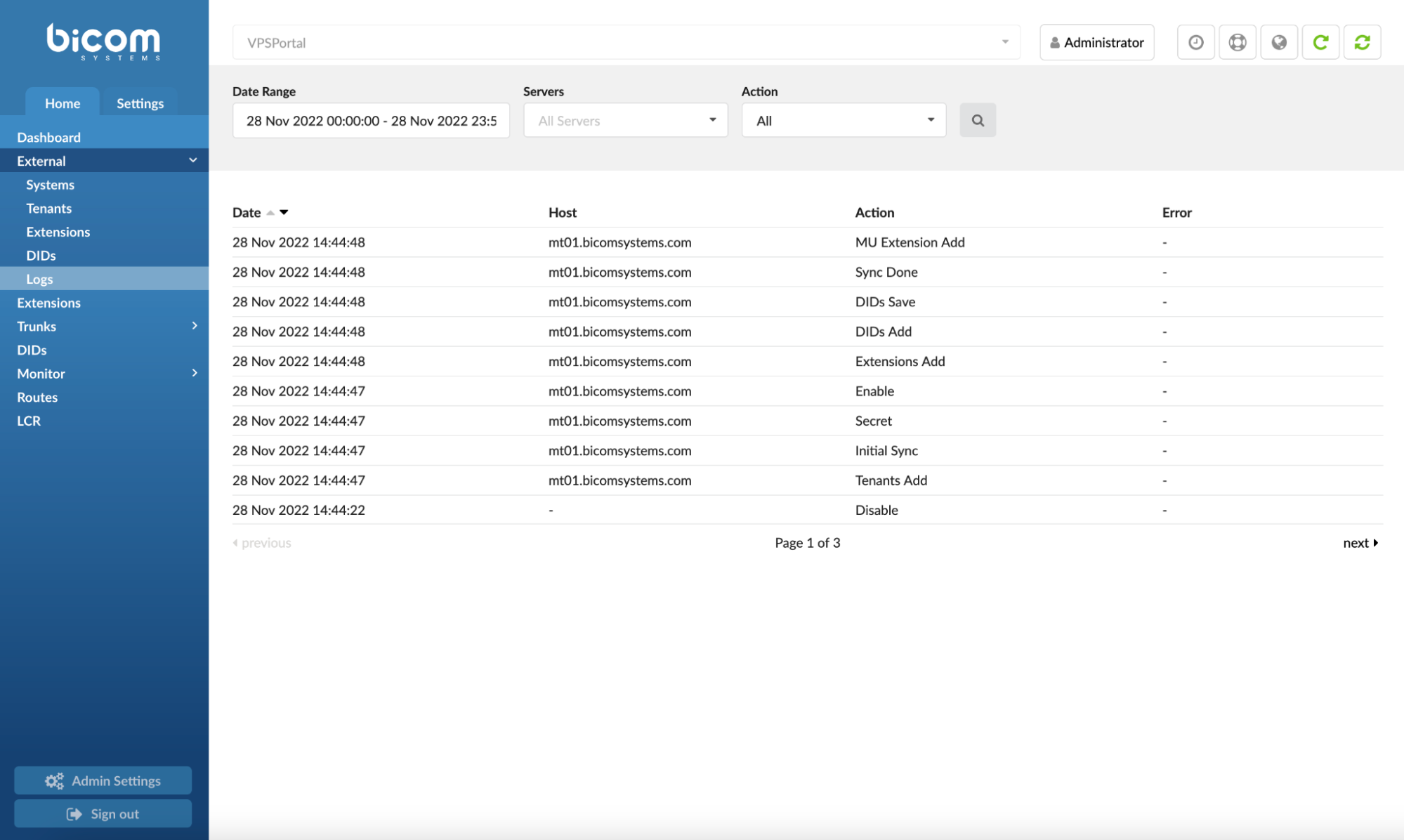¶ Getting Started
In your browser, open the address of your PBXware SP and authenticate using admin credentials.
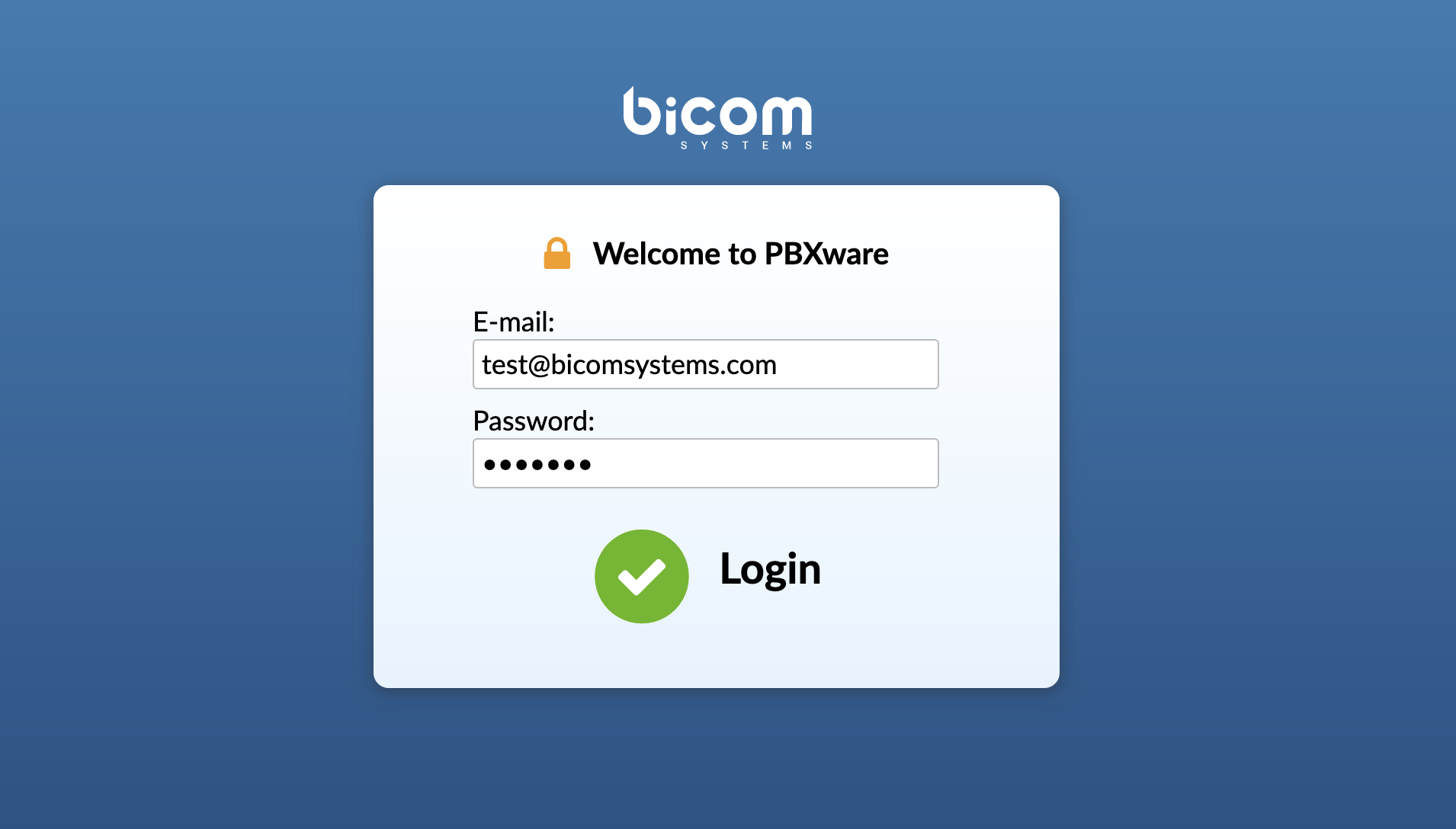
Navigate to Settings -> Servers and click edit next to your Server name.
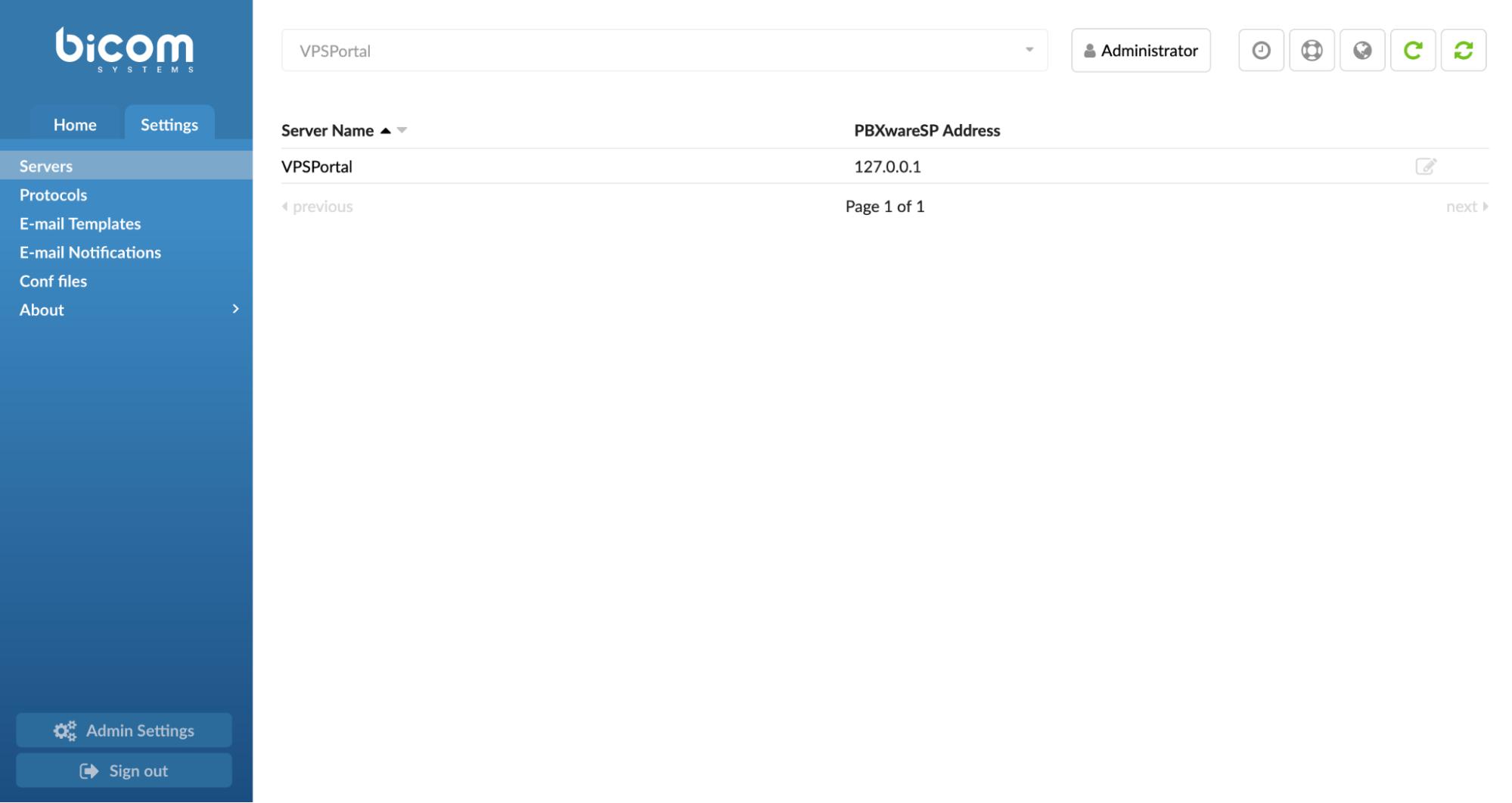
In the Network Info section, in the Primary Domain field, enter the exact domain which will be used on all of your PBXware instances connecting to PBXware SP, and in the Domain name field, enter the domain name used for accessing your PBXware SP.
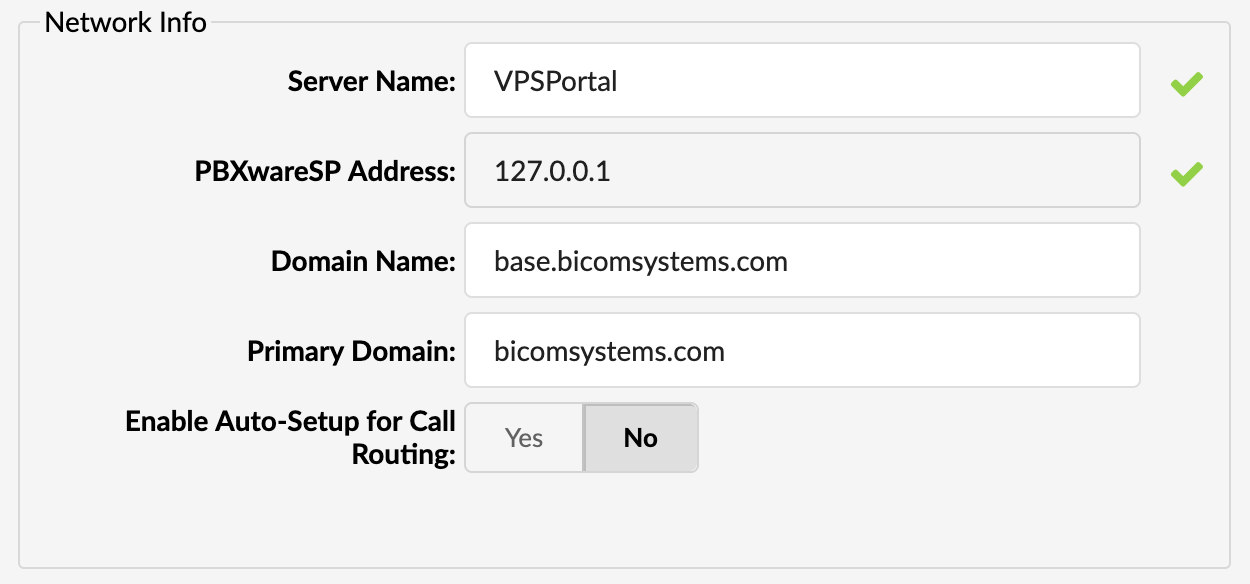
Please note, unless all the PBXware systems connected to PBXware SP are on the same domain, most of the main functionalities of SP edition will not work.
In our example, we are using the primary domain “bicomsystems.com”, so all of the systems will be using this domain. PBXware SP is base.bicomsystems.com, MT system is mt01.bicomsystems.com and any other system we plan to control from PBXware SP will also need to use domain bicomsystems.com.
If you only plan to use PBXware SP to control remote systems, confirm Enable Auto-Setup for Call Routing to No, but in case you would like to use your PBXware SP as a gateway and route calls from all of your systems through it, set this option to Yes.
With this option set to Yes, whenever you add a new server to PBXware SP, a Multi-user extension will be automatically created on SP and a new trunk will be created on the remote PBXware system with all the necessary registration details already configured. In addition, all the DIDs from the remote system will be re-created on SP edition and pointed to the MU extension.
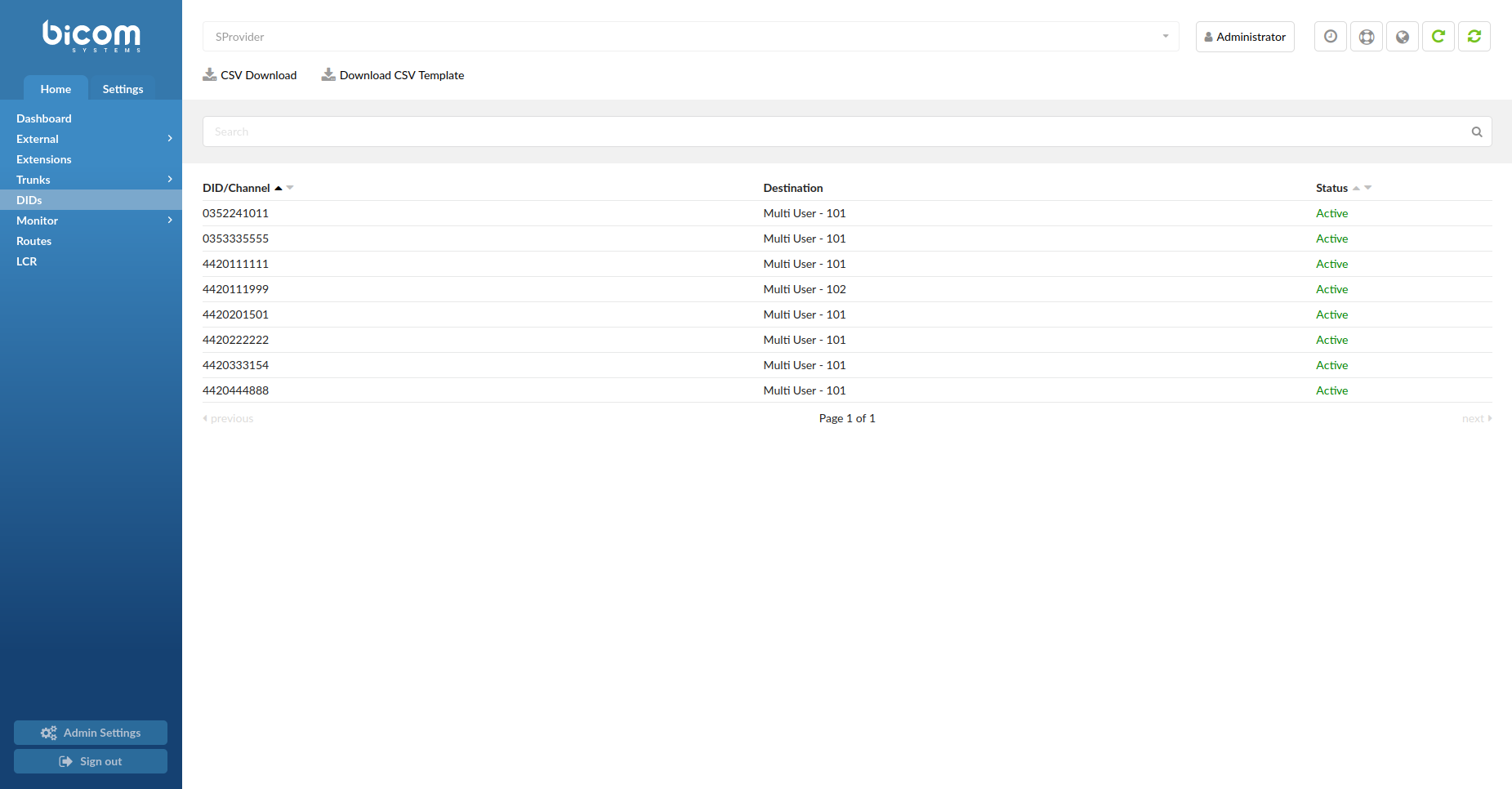
In case you decide to use this feature, the call flow between the trunk provider and your PBXware should look like this:

Please note that you will still need to modify the settings on the external system to make sure outbound calls are routed through the new trunk.
If created, Multi-user extensions will be located on the Extensions page, reachable from the left navigation pane.
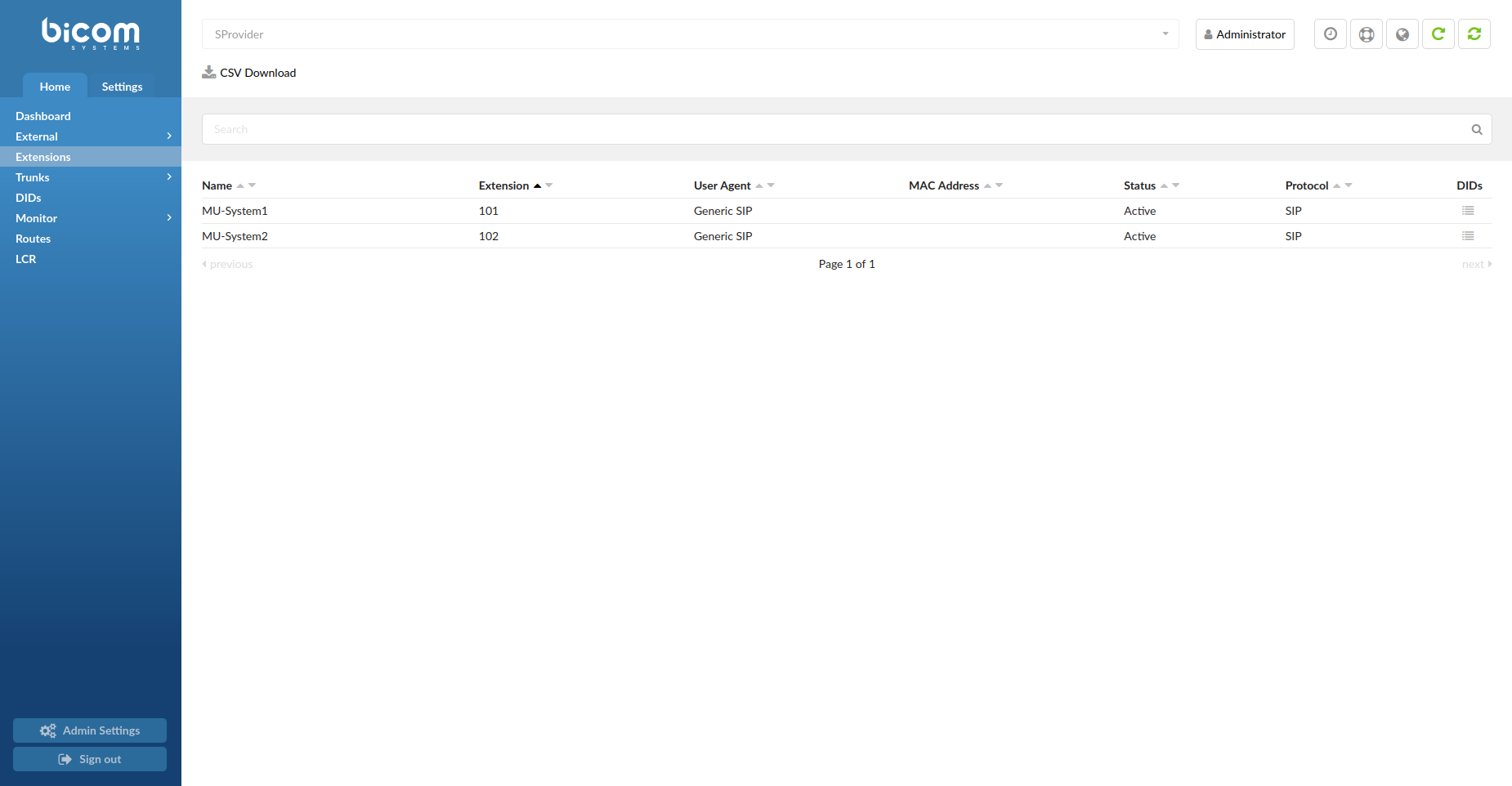
NOTE: In case you decide to use this feature and route all of your calls through PBXware SP, please note that same as with other PBXware editions, the total volume of calls PBXware SP will be able to handle will depend on available hardware resources.
Once all the settings in the Networking section are configured, click Show Advanced Features and scroll down to the Features section. To ensure the remote systems' control is fully functional, please make sure Use Dynamic Features is set to No.

Once done, click Save to preserve changes.
¶ Adding new server
To add a new server, click External -> Systems in the left navigation panel and then click Add Server button in the upper left corner of the page.
Once Add window is opened, we will need to populate several fields in order to add new PBXware to our SP platform:
- Name - Recognizable name of the External System you are adding
- Hostname - domain name server can be reached at i.e. mt01.bicomsystems.com
- API Key - API key used for authenticating remote connection to the system you are adding.
Please note, you will first need to create a new API key on remote PBXware and paste it into this field.
- E-mail - in case you previously enabled Auto-Setup for Call Routing, this e-mail address will be used when creating a Multi-user extension on SP.
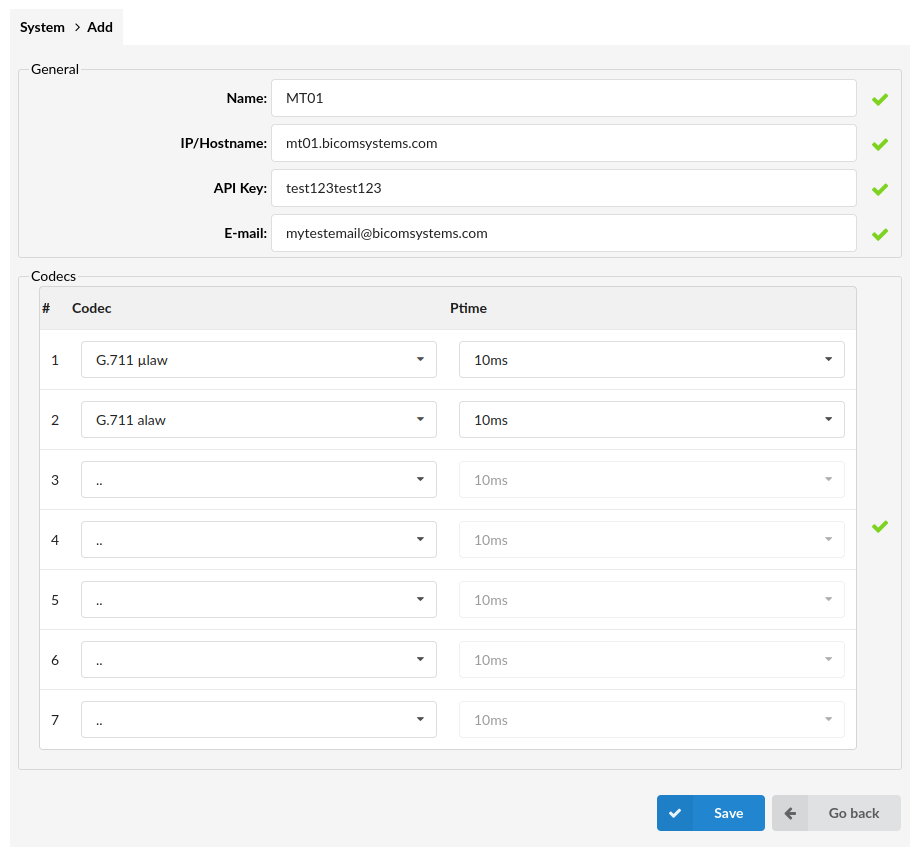
In addition to these fields, you will also need to select the preferred codecs you would like to use with this trunk.
The list of codecs we can choose from will depend on the codecs enabled on your PBXware SP, under Settings -> Servers -> System (edit) -> Default codecs (section).
Please note, in case no codecs are selected, and we try to add a new system, a warning message will be displayed:

NOTE: Selected codec(s) will directly affect trunk setup on both ends:
PBXware SP: After successfully syncing the remote system, a new Multi-User extension will be created with the same codecs we have selected in the previous step.
Remote PBXware: A new trunk SPtunk will be created with the codecs we have selected in the previous step.
Which codecs will be applied on SPtrunk still depends on which ones are enabled on the remote system Master tenant.
Once all fields are populated, click Save to add your new PBXware.
Assuming Hostname and API Key were correctly populated, the sync process should start, and after a short period, your server status should change from In Progress to Completed. In order to see this change, you will need to refresh the page manually.
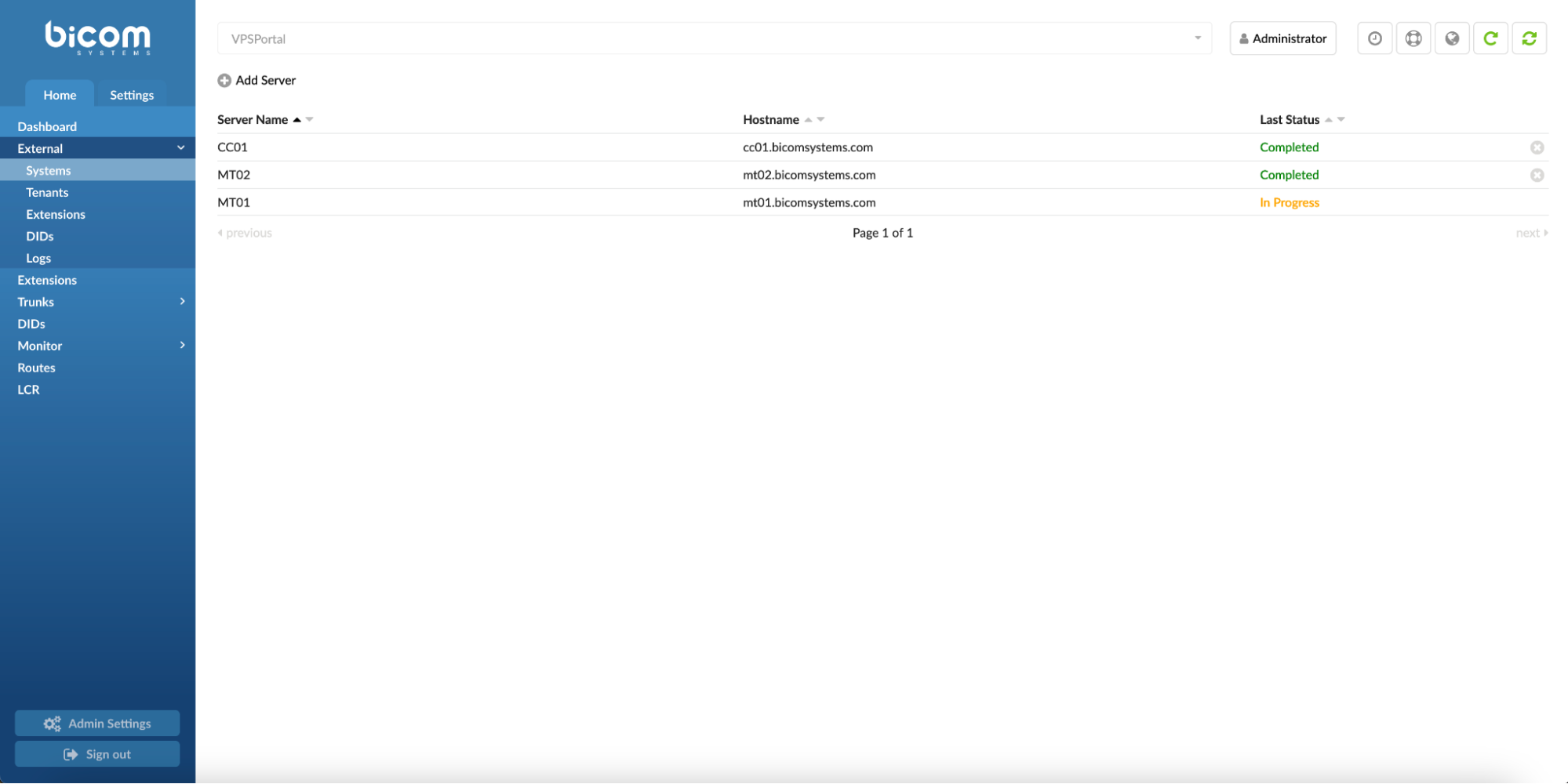
Once the sync is done and the status is changed to Completed, all the information about Tenants, Extensions, and DIDs from the external system will be synchronized and available for direct access or editing from the PBXware SP interface, with a simple click of a mouse, and without the need to log in to any of the remote systems.
Any future changes to any Tenant, Extension, or DID, made either on PBXware SP or on the external system(s) directly, will be synchronized between two PBXware systems in real-time as soon as changes are applied.
To access any of these elements, click External in the left panel navigation menu and then select one of the available options:
- Tenants
- Extensions
- DIDs
From this point on, filtering, navigation, and editing are straightforward as on any other PBXware edition.
NOTE: When accessing a remote system using PBXware SP’s SSO (Single-Sign-On) feature, the username displayed in the PBXware interface will be SP User instead of Administrator to inform users of how they are accessing the external system. In addition, any changes made on the external system will be assigned to the SP User on the Action Logs page.
Although you will have most of the permissions of the PBXware Administrator account, Account Settings will be disabled when you are logged in as an SP User, preventing you from changing the password or setting up 2-factor authentication. You must log in to the remote system directly to make these changes.
¶ Logs page
If adding a new external server fails, please navigate to the External -> Logs page for more information about the issue.
On the Logs page, you will also get all the information about the status of relevant actions performed on PBXware SP. You can filter the data by date, host, and action type.
